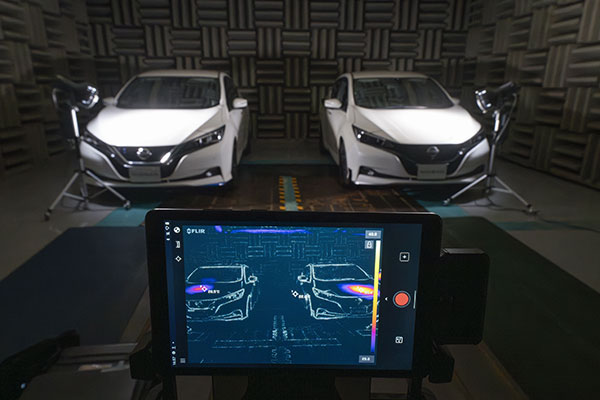
Nissan has been trialling an automotive paint aimed at helping lower a vehicle’s ambient cabin temperature in summer and reduce the energy usage of the air-conditioning system.
Developed in partnership with Radi-Cool, a specialist in radiative cooling products, the paint could be very useful during Australian summer months, especially as electric vehicles (EV) become more common and owners work to squeeze every bit of life and kilometre of range from their batteries. After all, a cooler cabin requires less air-conditioning run-time to reach a comfortable temperature and helps reduce the effort required of an engine, or the draw on a battery.
Nissan says the new paint ‘incorporates metamaterial, synthetic composite materials with structures that exhibit properties not usually found in nature.’
The cool paint features two microstructure particles that react to light, reflecting and counteracting sunlight and the sun’s rays. Combined, the particles reduce the transfer of heat into surfaces such as the roof, hood, doors and panels.
A feasibility trial was begun in November 2023 at Tokyo International Air Terminal at Haneda, applying the paint to a service vehicle. Although still in the testing phase, Nissan says the results have been impressive. Parked side-by-side under the sun, a vehicle treated in Nissan’s cool paint showed up to a 12-degree Celsius reduction in exterior surface temperatures and up to 5-degree Celsius cooler interior, compared to a vehicle featuring traditional automotive paint.
Nissan says that while radiant cooling paint isn’t new, it is typically used for buildings and structures and is often very thick, requiring application by a paint roller. Devoid of any clear topcoat, it can leave a chalky residue when touched.
The aim, then, is to develop a cooling paint that incorporates a clear topcoat, can be applied via a spray gun, and meets rigorous quality standards. Nissan says it has tested over 100 samples and has reached a point where it is currently evaluating a thickness of 120 microns. Development will continue as the company looks to explore thinner options that deliver the same level of cooling performance.
Source: Motor Trader e-Magazine (September 2024)
19 September 2024
